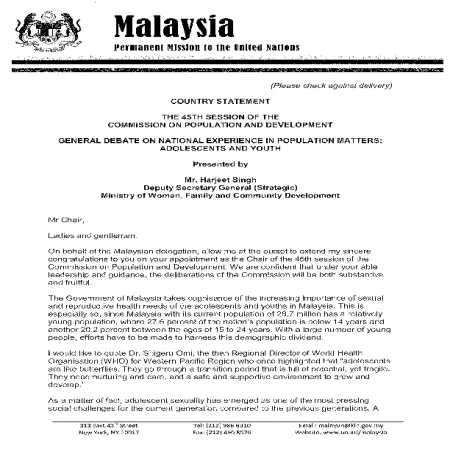Browse by Year
Results for Year : "2012"
|
|
The effectiveness of human resource training programme at the National Population and Family Development Board
Item Type: Thesis
Editor:
Year: 10/12/2012
Abstract: Training is a part of human basic needs to achieve perfects or efficiency in doing task. In the public service, training is a must for everyone in order to enhance their skills, knowledge and attitude. This study is to find out the effectiveness of Human Resource Training Policy. The study was done at the National Population and Family Development Board (NPFDB), one of the Government agency under a Ministry of Women, Family and Community Development. The data is collected through distributed questionnaire among the officers and staffs at NPFDB. The questionnaire is divided into 3 part consists respondent profile, effectiveness of training program (13 question) and employee attitude towards training (13 question) and ended with comment or suggestion from respondent if any. Secondary data also is used provided by the Human Resource Department, NPFDB. Quantitative analysis is carried out on this data and standard SPSS (version 18.0) is used to run the analysis. Descriptive statistic is used to analyse respondent's profile. The study shows that independent variable are negative significant with dependent variable. The perception and perceived outcome of the study point that the human resource training policy is significant and acceptable.
|
|
|
|
|
|
The impact of Indonesian migrants from the locals' perception: a study in Sabah, Malaysia
Item Type: Scientific Poster
Editor:
Year: 00/08/2012
Abstract: Being a developed country, Malaysia has been receiving a large number of labour migrants from other neighboring countries. Statistics show that the total number of non-Malaysians in 2010 is 2.3 million compared to 1.3 million in the year 2000. It is over 8 percent of the total population in Malaysia and comprises mostly of Indonesian migrants. This phenomena has a great impact on Malaysia and its people. The objective of this study is to determine the impact of Indonesian migrants from the locals' perception and also to determine if gender, ethnicity, religion, marital status, educational level, job industry and monthly income make a difference in their perception. The data used for this study were obtained from the Study on Indonesian Migrants in Tawau, Sabah conducted by the National Population and Family Development Board (NPFDB) Malaysia in 2010. The survey managed to obtain information from 787 locals in Tawau. The dependent variable is the overall perception of the locals on the impact of the Indonesian migrants while the independent variables are gender, ethnicity, religion, marital status, educational level, job industry and monthly income. Independent t-test and analysis of variances (ANOVA) were applied to the data set. As a result, this study indicates that the locals in Tawau feel that the presence of the Indonesian migrants does have an effect on them. The mean score obtained was 95.053 out of a total of 135. The results of ANOVA showed that ethnicity (F = 6.950, df = 7), marital status (F = 12.320, df = 3), education level (F = 4.058, df = 7), job industry (F = 27.374, df = 3), and monthly income (F = 15.201, df = 6) contributed to the differences in the locals' perception on the impact of Indonesian migrants. Only gender and religion does not affect their perception. Thus, the entrance of Indonesian workers needs to be monitored as their presence are affecting the locals.
|
|
|
|
|
|
The 45th session of the Commission on Population and Development at the general debate on national experience in population matters: adolescents and youth, New York, 24th April, 2012
Item Type: Country Statement
Editor:
Year: 00/04/2012
Abstract: The Government of Malaysia takes cognisance of the increasing importance of sexual and reproductive health needs of the adolescents and youths in Malaysia. Since Malaysia with its current population of 28.7 million has a relatively young population, where 27.6 percent of the nation's population is below 14 years and
another 20.2 percent between the ages of 15 to 24 years. With a large number of young people, efforts have to be made to harness this demographic dividend.
|
|
|
|
|
|
The Philippine pension system: promoting fairness and sustainability
Item Type: Conference or Workshop Item
Editor:
Year: 00/00/2012
Abstract: This paper presentation about sharing knowledge on the retirement system in the Phillippines, currently characterized by a four-pillar structure. The first pillar refers to social assistance programs created to address the needs of the elderly poor. The second pillar covers the following mandatory defined-benefit programs: (i) the Social Security System (SSS) for private sector workers, (ii) the Government Service Insurance System (GSIS) for public sector workers, and (iii) the Armed Forces of the Philippines Retirement Service Benefit System for the military, which altogether cover about 79% of the labor force. The third pillar encompasses mandatory defined contribution programs, which can be further expanded. The fourth and final pillar covers voluntary pension programs, involving various forms of savings instrument. Because the pension system is fragmented, contributions and benefits vary depending on the program.
|
|
|
|








